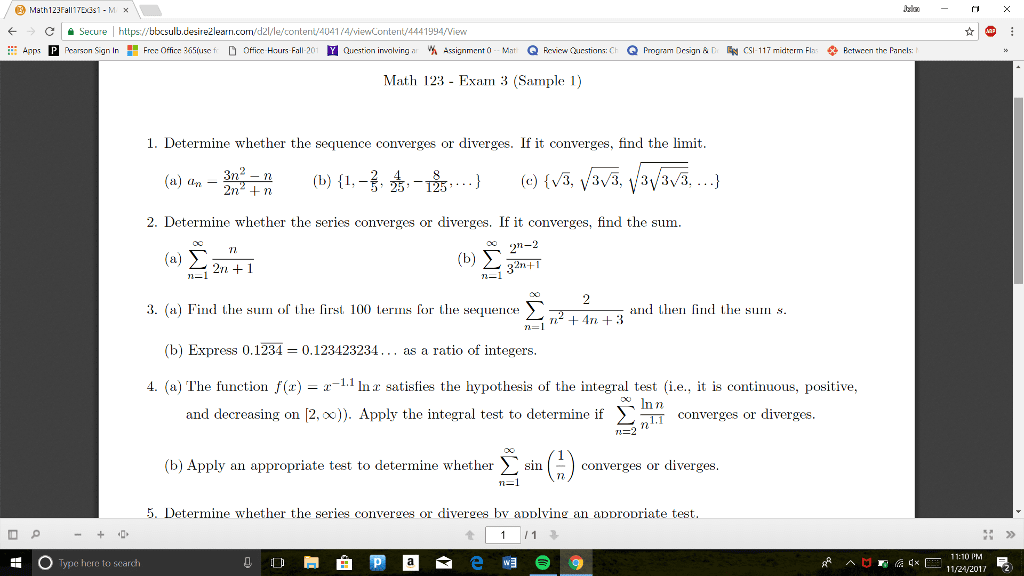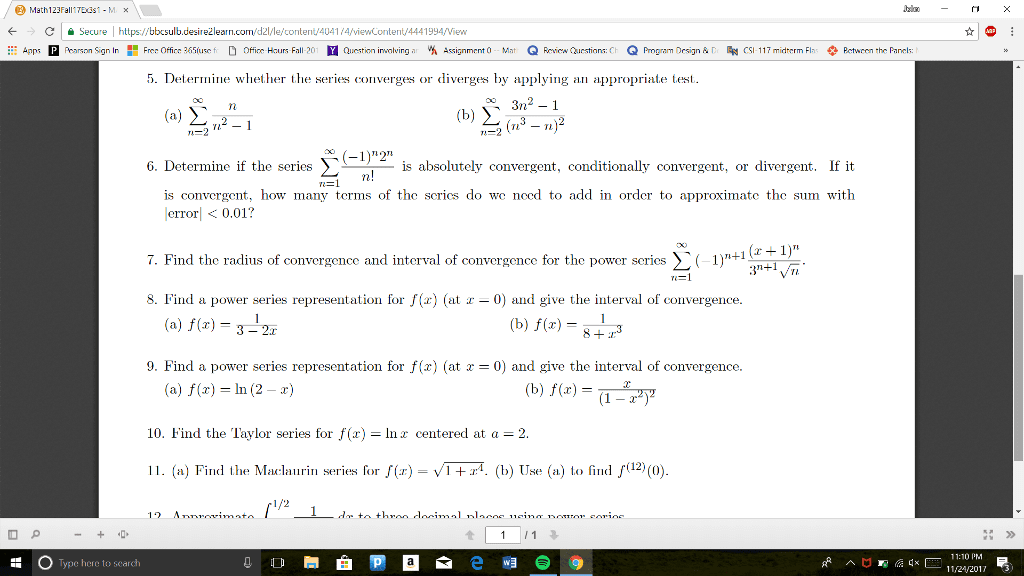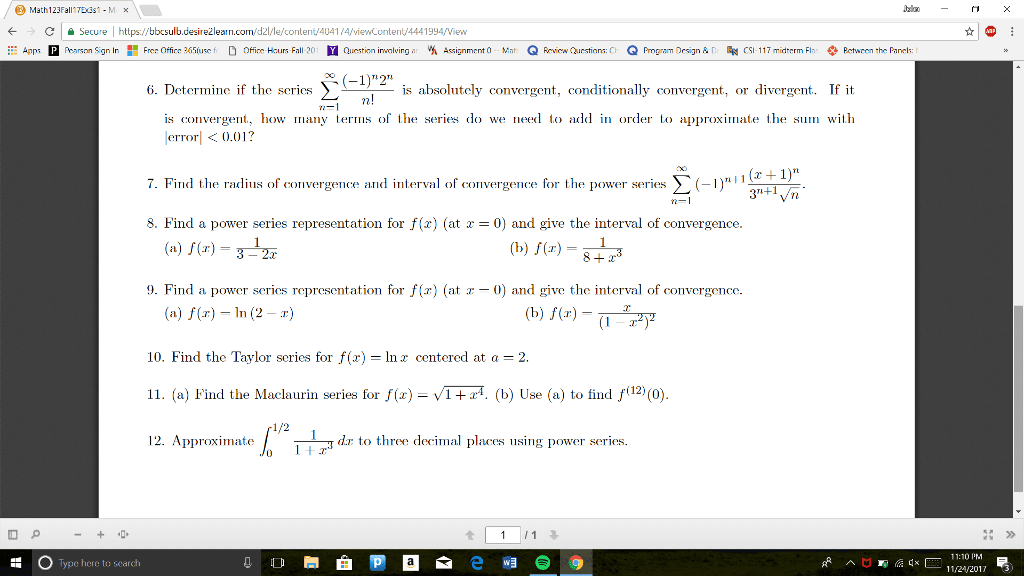MATH 1005 : T3Solutions.pdf
Document Summary
Answer: (b) (b) 3 (c) (d) 2 (e) does not exist: if 3 1. 1 n for all n 1, then lim n an = (e) (a) 0. Answer: (d) (b) 1 (c) 2 (d) 3: the sequence {rn} n=0 converges for. [3: the sequence (b) |r| 1 (cid:3) (cid:4) . 3 2 n n=1 is (c) |r| > 1 (d) |r| 1 (e) 1 < r 1. Answer: (a) (a) increasing and bounded (b) decreasing and bounded below (c) decreasing and bounded (d) decreasing and bounded above (e) none of the above. 2 (e) does not exist (cid:3) x(cid:4) y(cid:4) (cid:4: find the general solution x(t) and y(t) of the system (cid:1) (cid:2) , a = (cid:1) (cid:2) (cid:5)(cid:5)(cid:5)(cid:5) 1 2. = ax, x = ve t av = v. X(cid:4) (cid:5)(cid:5)(cid:5)(cid:5) = 2 2 3 = ( 3)( +1) = 0 1 = 3, 2 = 1. (cid:1) a b (cid:2)(cid:1) = 0 a = b v1 =





